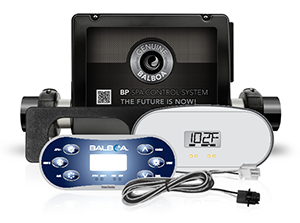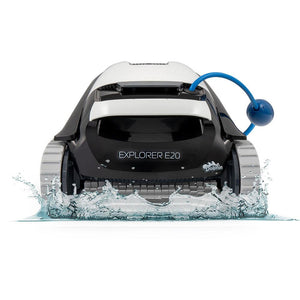Contact Us Free: (866) 316-9064
Monday - Friday
9AM - 5PM (PST)

REOPENING YOUR POOL FOR SUMMER: TEN USEFUL TIPS
Winter has come and gone. It is now time to enjoy summer and everything that comes with it: the warmth, barbeques and outdoor parties, concerts, beach parties etc. In a nutshell, summer means fun. It means pools can now be reopened and pool parties can restart; it means bikini-time.
As you reopen your pool this summer, here are 9 tips that will definitely come in handy:
- Clean Pool Cover
The first step in the process of reopening your swimming pool for the warm season is removing debris from the cover. Clean your swimming pool cover thoroughly and remove the leaves, stones, sand etc. that must have collected on it. Use a soft broom to avoid damaging the cover.
After that’s done, use a hand pump to remove any standing water on the cover. Before doing this, ensure that your pool cover has no holes because if it does, you could unknowingly be pumping water out of your pool; you don’t want that. After cleaning, leave the pool cover on and move to step 2.
- Remove Winter Plugs and Fittings
When the last summer season ended, you took some effort to close your pool and ensure that it was well-protected for the fall. The next step is to take out those fittings. If at the time, you fixed the winter plugs in by yourself, then you already know how to locate them. If the plugs were fixed by someone else, you will find them in the return ports just below the skimmers. Loosen the wingnuts and pull them out. There may also be some plugs in the skimmer ports, remove those too.
- Install Eyeball Jets
In place of the winter plugs that were just removed, install the correct plugs for the summer season: the eyeball jets. Place the jets in such a way that they point towards the water surface and slightly disturbs it.
- Connect Pump and Filter
Check the pump and the filter to make sure that there are no damaged parts. If there are, get replacements. If not, move on to the next step: cleaning out the filter medium. With some filters, you may need to take the components apart and clean out with a water hose. Be very careful not to manhandle the various parts.
Before connecting the filter system, ensure that the pump is primed and in perfect working condition. When priming the pump, some air will be retained in the pipes. Release this compressed air before starting the filter and the pump.
- Top-Up the Pool and Remove the Pool Cover
Over winter, the water level in the swimming pool would have gone down. Top it up while the pool cover is still on. After doing this, take the pool cover off the surface of the swimming pool. If you removed all the water and debris from the cover as outlined in step 1, then it shouldn’t be difficult to get the cover off.
Once the cover is off, wash it thoroughly and dry it off before keeping it in storage. NB: Do not dry the cover on grass, if you leave it there for long, it will kill the grass.
- Clean Out Residual Debris
Even though the swimming pool was covered over the winter, it is likely that some dirt, leaves, twigs etc. slipped into the pool. Also, if you didn’t clean the
cover well before removing it, some dirt from the cover would surely have fallen into the pool. Get a leaf rake (or net) and clean out the residual debris in the swimming pool. Not only are they—the debris—dangerous for the people who will eventually swim in the pool, when chlorine is added to water, it seeks out dirt and as a result, you use more chlorine than required. The less the dirt in your pool, the fewer chemicals you’ll need.
- Test the Pool Water
Once you’ve thoroughly cleaned out the pool and remove all the debris and dirt, you may feel tempted to jump in and start swimming right away. Don’t make that mistake. You’ve closed the pool off for months, and by now, the water’s chemistry is definitely off by a couple of points. You need to test the water chemistry.
Before you test the water, however, allow the water you added in step 5 mix properly with the water previously in the pool. If you don’t, whatever readings you get aren’t accurate. It will take 9-12 hours, on average, for the water to circulate.
After the ~12 hours, use your pool test kit to test the water’s chlorine level, acidity, alkalinity, hardness level (note that some kits do not have all these tests options, and some have more). To be extra safe, you can take a water sample to a swimming pool store and let professionals take the readings for you.
- Balance Pool Water Chemistry
Once the water is tested, the next step is to add the required chemicals and balance out the pool water chemistry. The ideal water levels in a pool are;
pH range: 7.2—7.6
Alkalinity: 1o0—150 ppm
Chlorine Level: 3 ppm
If your readings are not in the ranges outlined above, you need to use some chemicals to balance things out. To increase the pH level in your swimming pool, use soda ash (Sodium Bicarbonate). To reduce pH level, use granular acid or muriatic acid. Note that muriatic acid and soda ash also works for alkalinity levels. The former reduces alkalinity and the latter reduces it.
Having left your pool without use for long, it is likely that the chlorine level is low. You can shock it to the required 3 ppm using chlorine tablets. Additionally, you do not have to wait to see algae in your pool before taking steps to remove it. You can prevent algae growth by using an algaecide just after the chlorine shocking.
(Most swimming pool stores have all the chemicals mentioned above. Each chemical will have an instruction manual attached, follow the instructions precisely).
- Give the Water Time to Clear
After adding all the chemicals, wait for approximately 12 hours for the water to settle. If you want to be extra careful, you can wait for a full day.
While you wait, check the diving board and make sure the surface is not slippery. Furthermore, install the ladders and handrails and check them for signs of wear and tear.
- Enjoy
Once 24 hours have elapsed and the water surface is clear, your pool is ready for the summer.
Enjoy!



